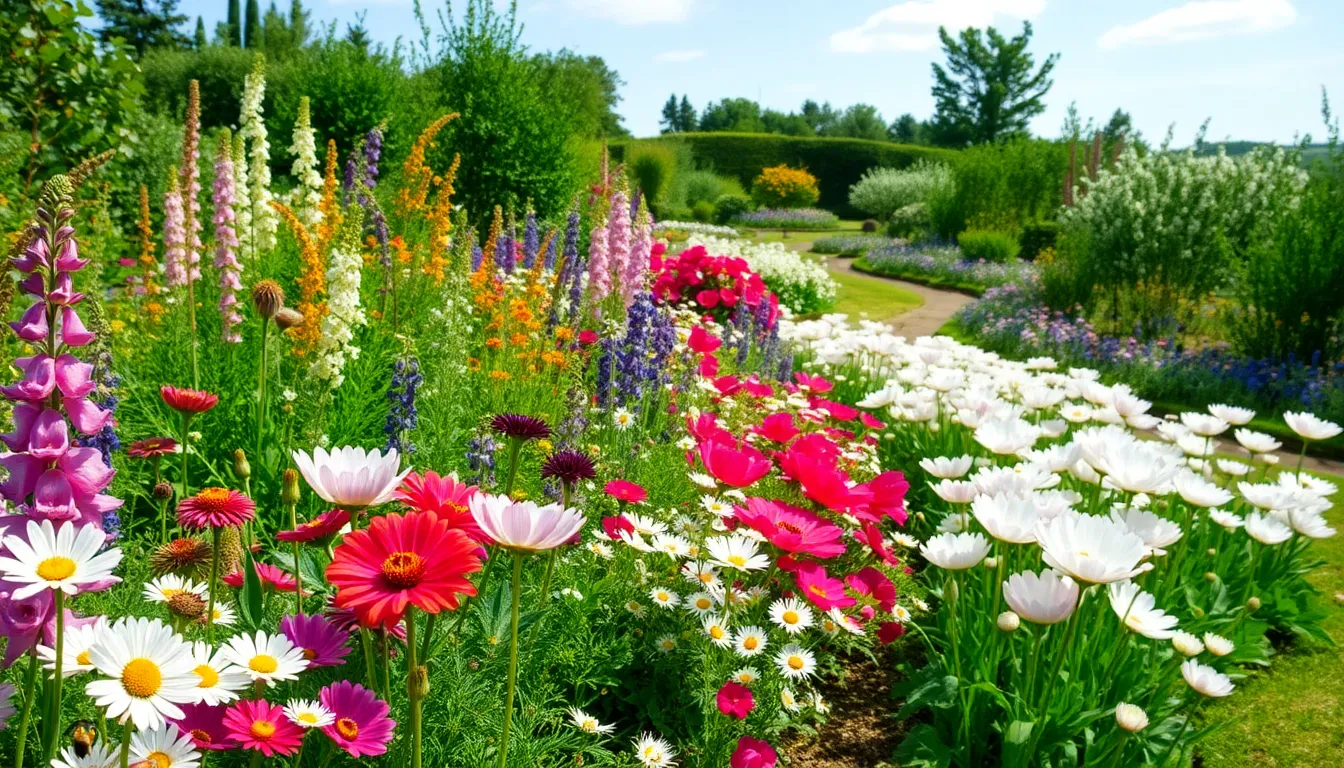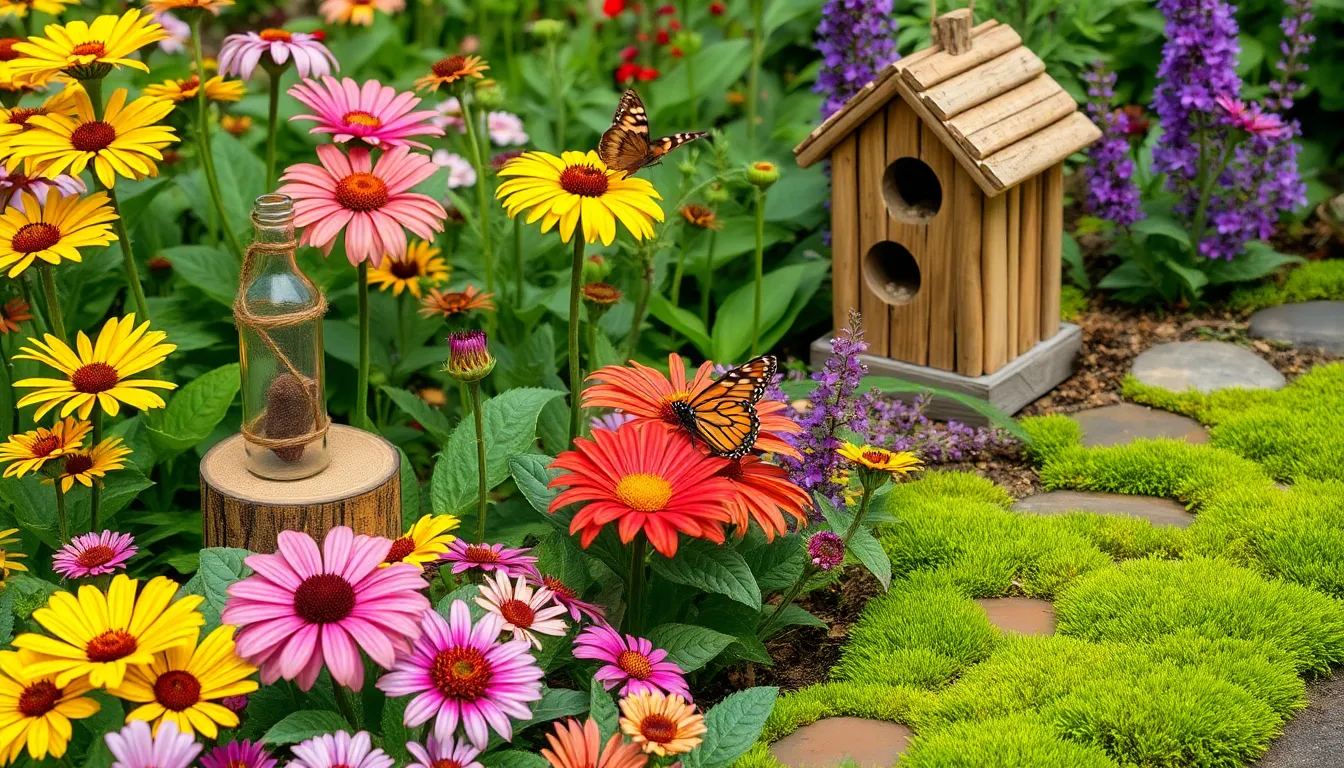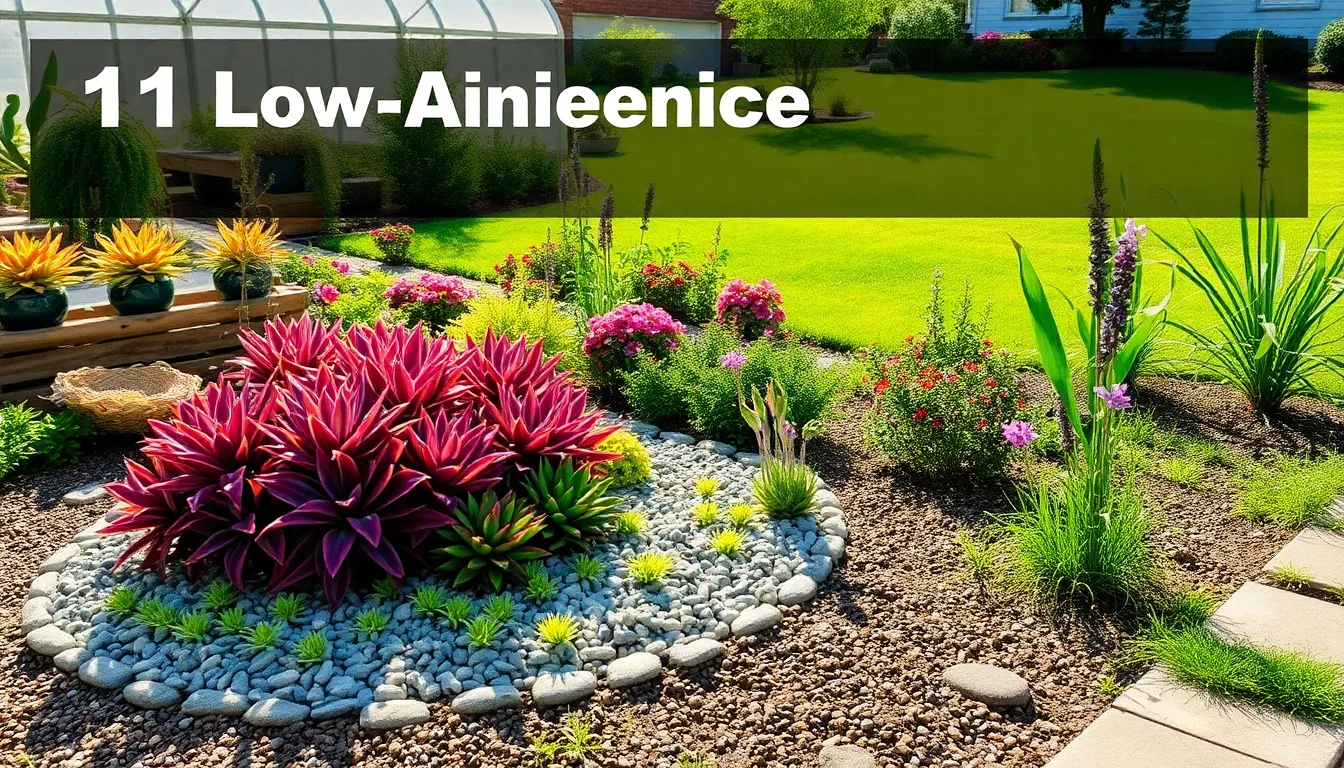Creating a flower bed is like painting with nature’s most vibrant palette. Whether you’re just digging into gardening or have green thumbs itching for a new project, designing a flower bed offers an opportunity to express your creativity while enhancing the beauty of your outdoor space. Flower beds are not just about planting; they are about crafting a living masterpiece that evolves with the seasons. They can transform a bland patch of earth into a colorful oasis that delights the senses and nurtures the soul.
In this article, we’ll explore eight stunning flower bed designs that cater to both novice and seasoned gardeners alike. You’ll discover how to incorporate various shapes, colors, and textures to create a harmonious garden that suits your personal style and environmental conditions. From classic cottage gardens bursting with charm to sleek, modern designs that make a bold statement, we’ve got something to inspire every gardener. Each design is accompanied by actionable tips and expert advice to ensure your flower bed flourishes beautifully throughout the year.
So, prepare to get your hands dirty and your imagination soaring as we delve into the world of flower beds. Whether you’re looking to add a splash of color to your backyard or seeking a serene retreat filled with fragrant blooms, our guide will help you create a garden that is both stunning and sustainable. Let’s embark on this floral journey together, where every petal and leaf contributes to a tapestry of natural wonder.
Choosing the Perfect Layout
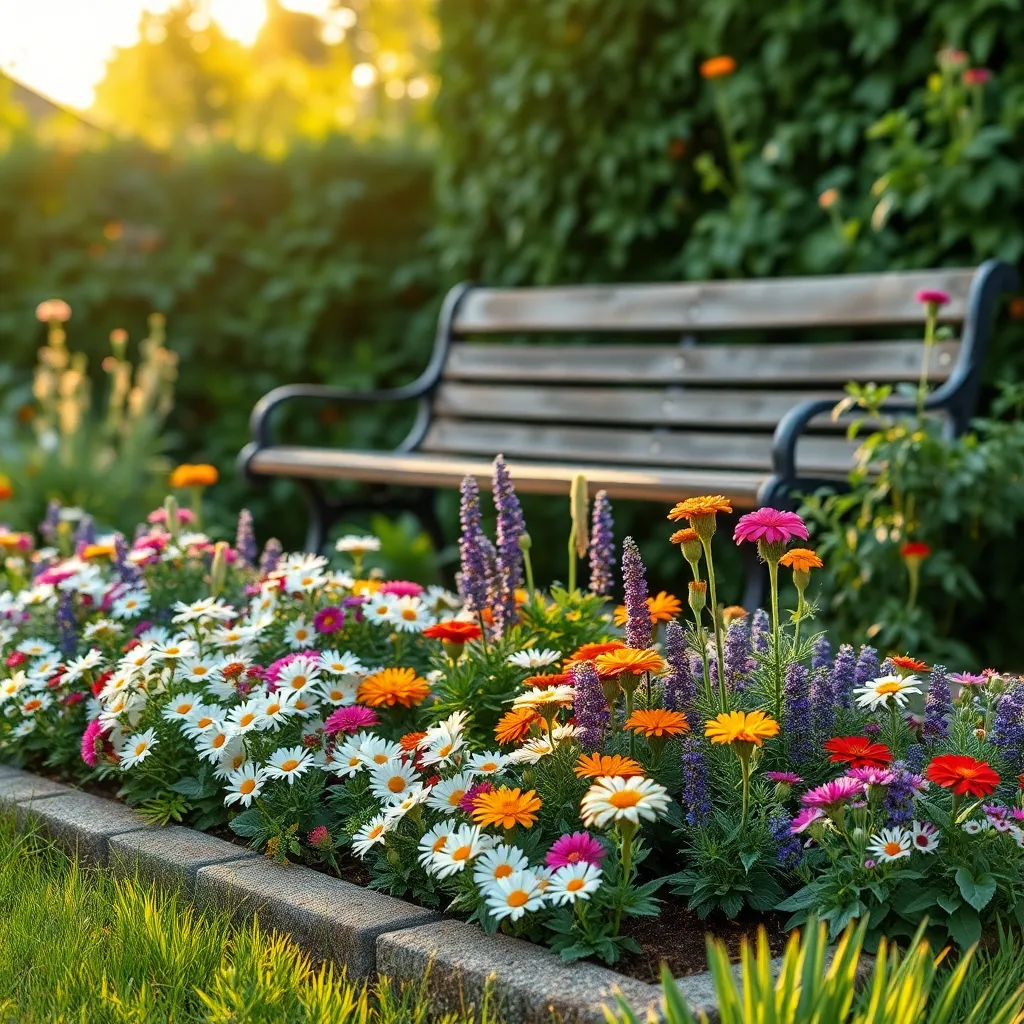
When planning your flower bed layout, consider the sunlight requirements of your plants. Position sun-loving plants in the sunniest spots, while shade-tolerant varieties should be placed where they receive less direct light.
Soil composition is another critical factor in your layout design. Test your soil’s pH and drainage to ensure it matches the specific needs of your chosen plants, amending it with compost or sand as necessary.
To create visual interest, group plants with varying heights and bloom times. This approach not only adds depth and texture but also ensures continuous color throughout the growing season.
For beginner gardeners, a simple design with a few plant varieties can be more manageable. As you gain confidence, experiment with more complex arrangements, incorporating a mix of annuals and perennials for dynamic changes and lasting structure.
Incorporating Colorful Blooms
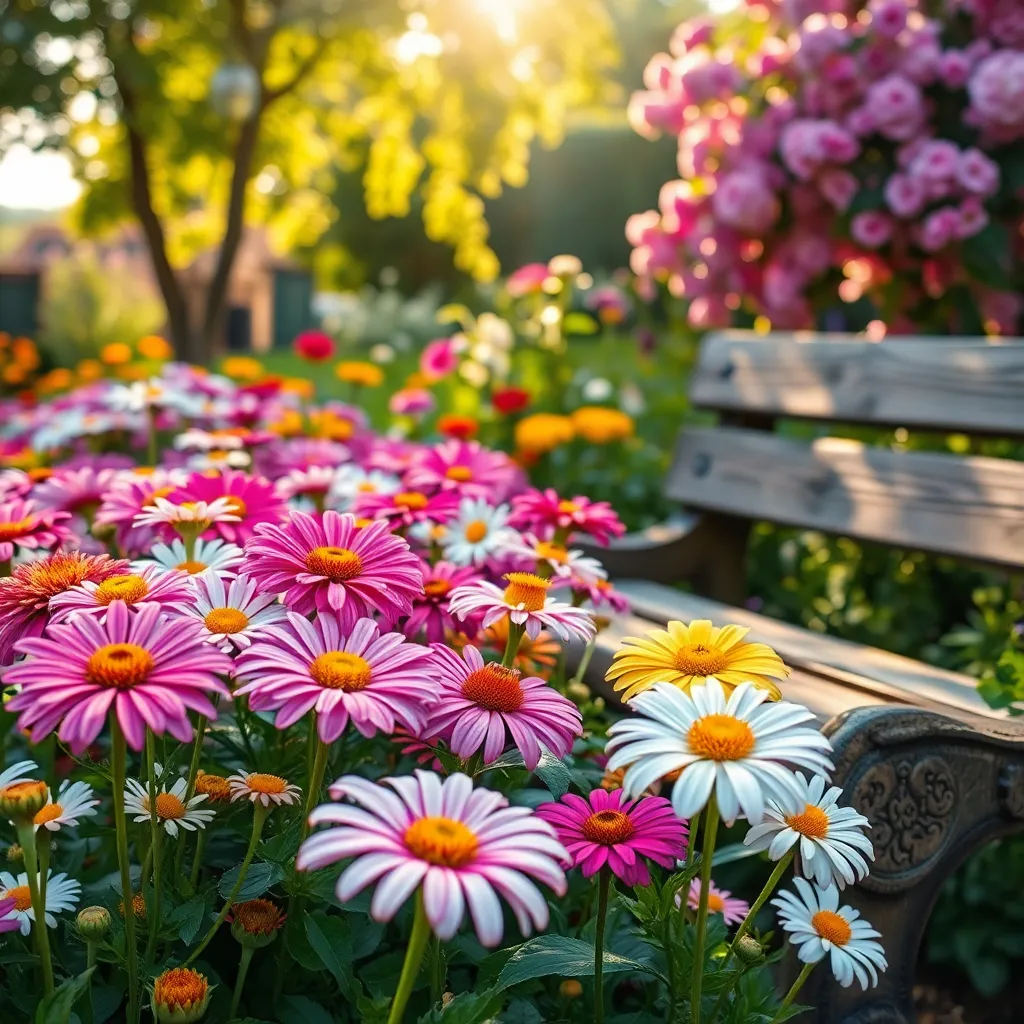
Incorporating colorful blooms into your flower bed design can bring vibrancy and life to any garden space. To achieve a harmonious blend of colors, consider using a color wheel to select complementary or analogous shades.
Begin by choosing a focal plant with bold hues, such as the radiant red of a daylily or the deep blue of a delphinium. Position these eye-catching plants at strategic points in your flower bed to draw attention and create visual interest.
Next, fill in around your focal plants with clusters of smaller, supporting blooms that share similar growing conditions. For example, pair sunny marigolds with zinnias to create a warm and inviting scene, as both thrive in full sun and require moderate watering.
To maintain your colorful display throughout the season, be mindful of each plant’s blooming period. Stagger the planting of varieties that bloom at different times to ensure continuous color from spring through fall.
For gardeners seeking a more advanced challenge, experiment with layering plants of varying heights to add depth and dimension. Use taller species like foxgloves or hollyhocks at the back of the bed, and shorter plants like alyssum or lobelia in the foreground.
Ensure the soil in your flower bed is well-draining and enriched with organic matter to support healthy growth. Regularly deadhead spent blooms to encourage new growth and prolong the flowering period of your plants.
Utilizing Height for Impact
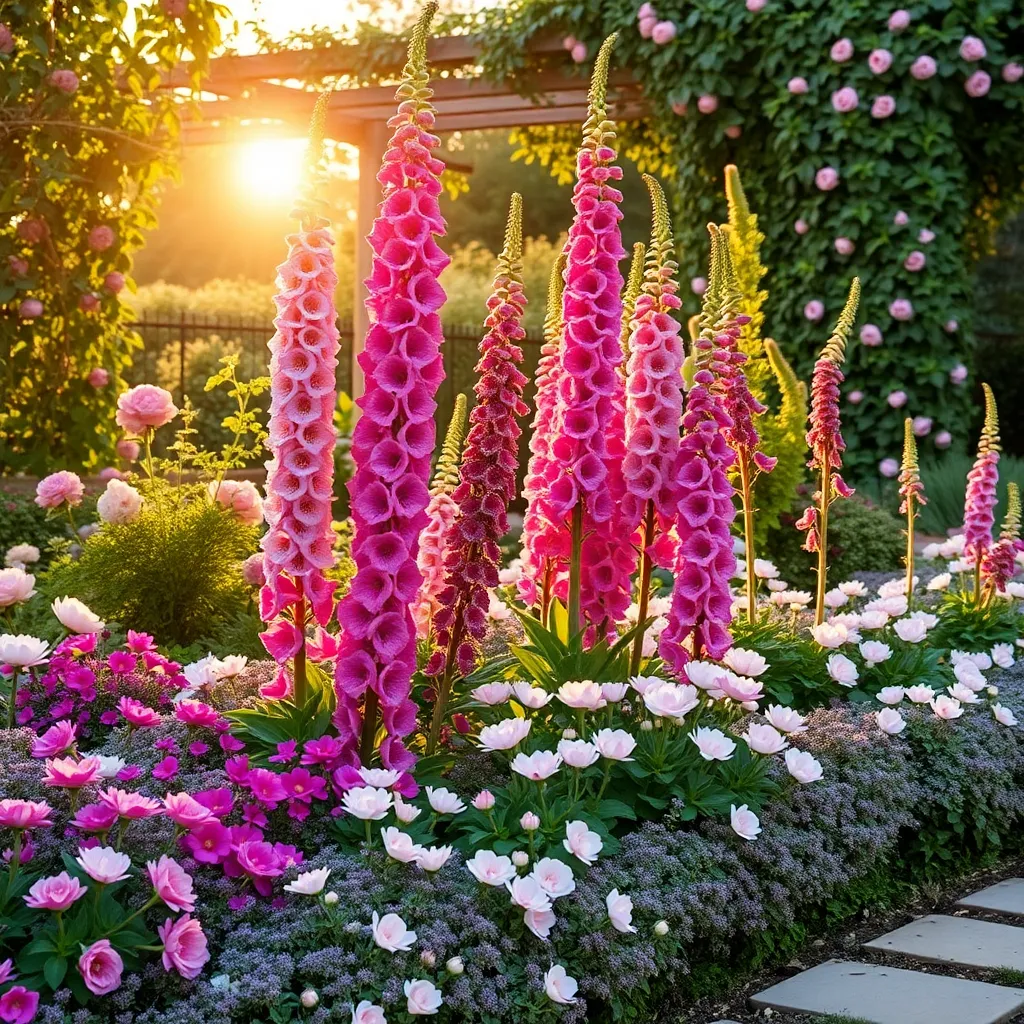
Creating vertical interest in your flower bed can transform a flat landscape into a visually dynamic garden. Utilizing height allows you to layer plants effectively, offering both depth and intrigue to your design.
Begin by selecting plants that naturally grow tall, such as delphiniums, foxgloves, or sunflowers, as they can serve as the backbone of your flower bed. For beginners, these options are excellent because they are easy to grow and can adapt to various soil types, though well-drained soil is generally best.
Consider incorporating structures like trellises or obelisks to support climbing plants such as clematis or morning glories. These vertical elements not only add height but also allow you to exploit limited space, making them ideal for small gardens or urban areas.
Advanced gardeners can experiment with layering plants by height, starting with taller species at the back and gradually decreasing to shorter plants at the front. This approach creates a natural flow and ensures that every plant gets the sunlight it needs, with taller plants often requiring full sun and shorter ones thriving in partial shade.
Creating Seasonal Interest
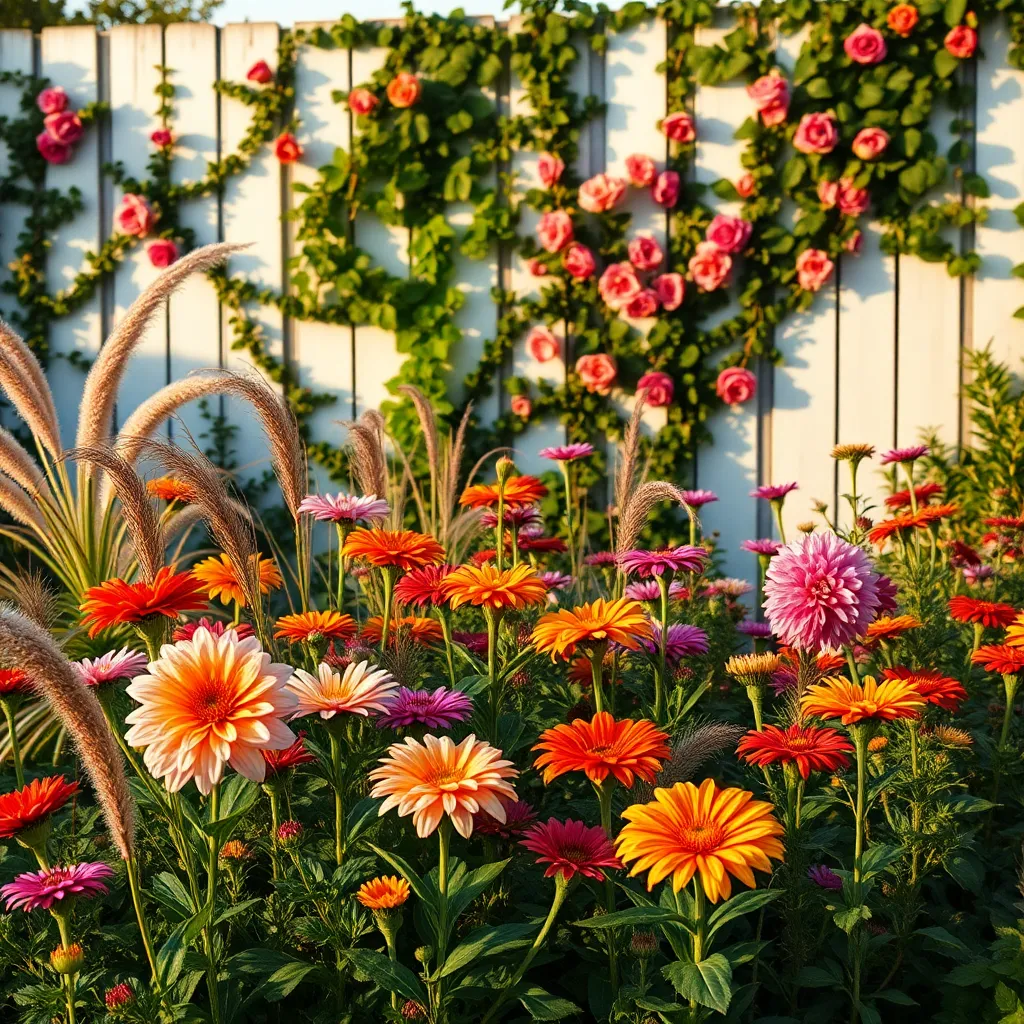
Creating seasonal interest in your flower bed involves thoughtful planning and plant selection. Start by choosing a mix of plants that bloom at different times of the year to ensure continuous visual appeal.
Consider incorporating bulbs like tulips and daffodils for early spring color. These bulbs are easy to plant in the fall and require minimal care, making them ideal for beginners.
For summer, add perennials such as coneflowers and daylilies, which thrive in well-drained soil and full sun. Regular deadheading will encourage more blooms and keep your garden vibrant throughout the season.
Incorporate autumn interest with asters and chrysanthemums, which prefer sunny spots and can tolerate a range of soil types. Advanced gardeners might try layering bulbs and perennials to create a complex tapestry that changes with the seasons.
Don’t forget evergreens and ornamental grasses for winter structure and texture. These hardy plants require minimal maintenance and provide a backdrop that highlights seasonal blooms.
- Plant spring bulbs in clusters for a natural look.
- Choose perennials that bloom in succession for a continuous display.
- Incorporate winter-hardy plants for year-round interest.
Mixing Textures and Foliage
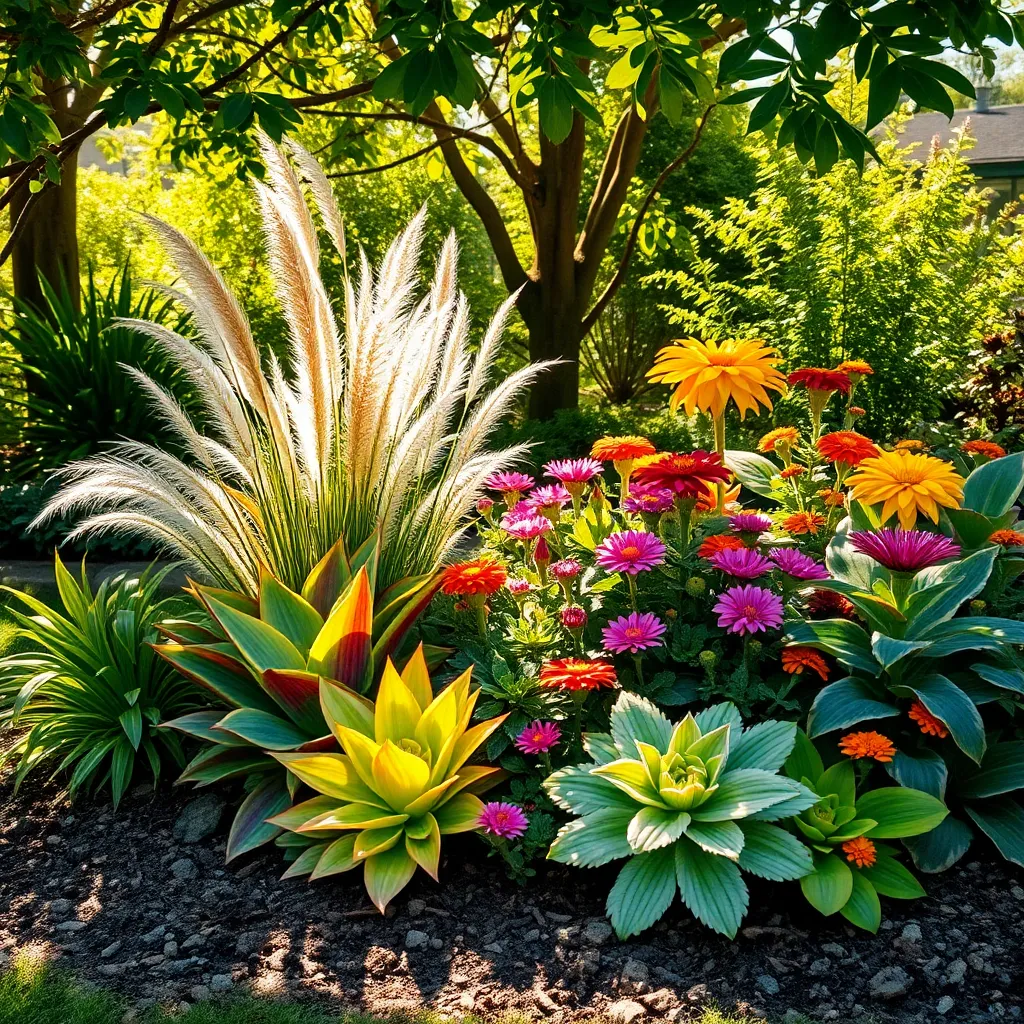
Incorporating a mix of textures and foliage in your flower beds adds depth and visual interest, transforming them into dynamic landscapes. To achieve this, combine plants with varying leaf shapes and sizes, such as broad-leafed hostas paired with the fine, airy foliage of ferns.
Consider using plants with different surface textures, such as pairing the glossy leaves of camellias with the soft, velvety foliage of lamb’s ear. This contrast not only enhances the appeal of your garden but also provides a tactile experience for visitors.
For beginners, start by selecting a few contrasting plants that thrive in similar conditions, ensuring they will coexist harmoniously. For example, choose plants that prefer partial shade and well-drained soil, such as astilbe and Japanese painted fern.
Advanced gardeners can experiment with color and texture by using variegated foliage, which adds a splash of brightness to shady areas. Consider plants like variegated Solomon’s seal, which offers both visual interest and adaptability in various light conditions.
Designing for Pollinator Attraction
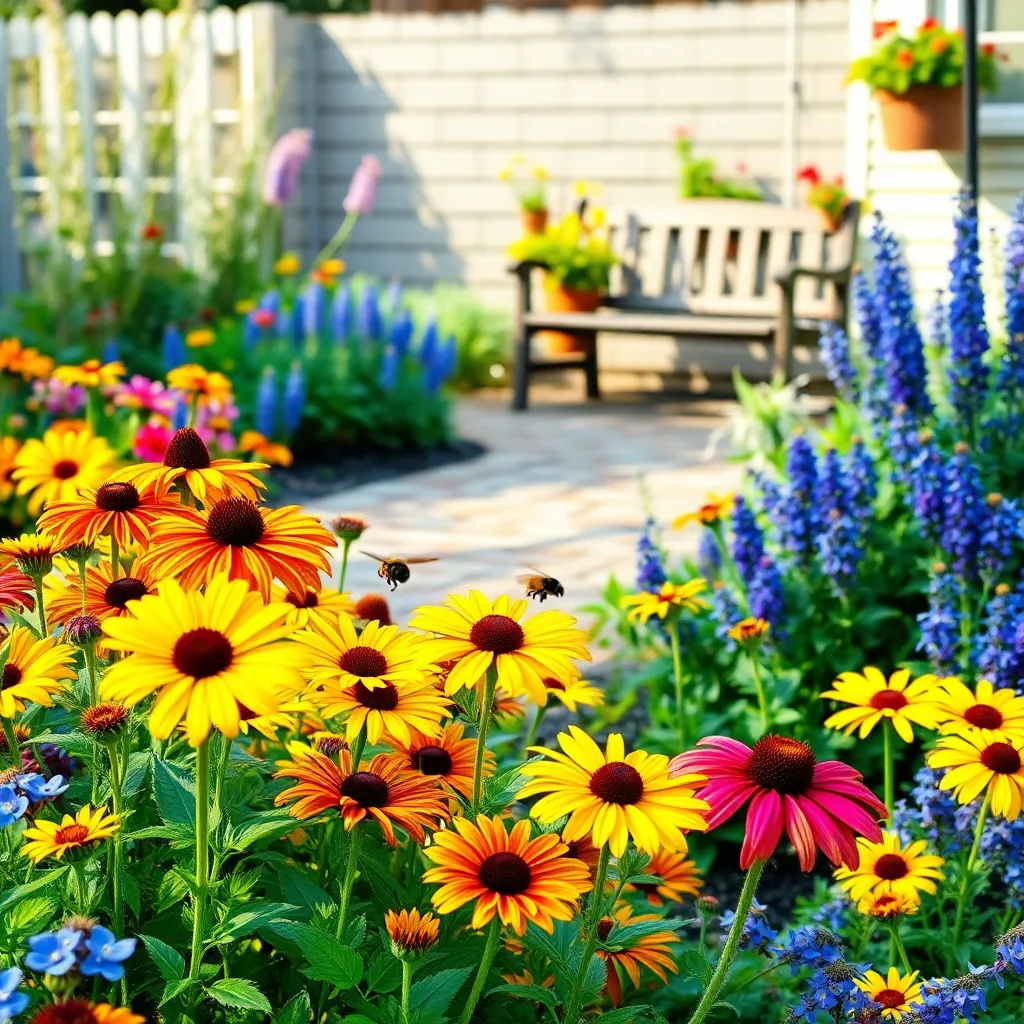
Attracting pollinators to your garden not only supports biodiversity but also enhances the health and productivity of your plants. Start by selecting a variety of flowers that bloom at different times of the year to provide a continuous food source for pollinators.
Consider planting perennials such as coneflowers, lavender, and bee balm, which are known for their ability to draw in bees and butterflies. These plants are relatively low-maintenance and thrive in well-draining soil with full sun exposure.
Incorporating native plants can significantly boost pollinator visits, as these species have co-evolved with local pollinators. Additionally, native plants generally require less water and fertilizer, making them an environmentally friendly choice.
For more advanced gardeners, try creating a layered planting design with tall, medium, and low-growing plants to offer diverse habitats. This not only adds visual interest but also caters to different pollinator species, from bees to hummingbirds.
Integrating Pathways and Borders
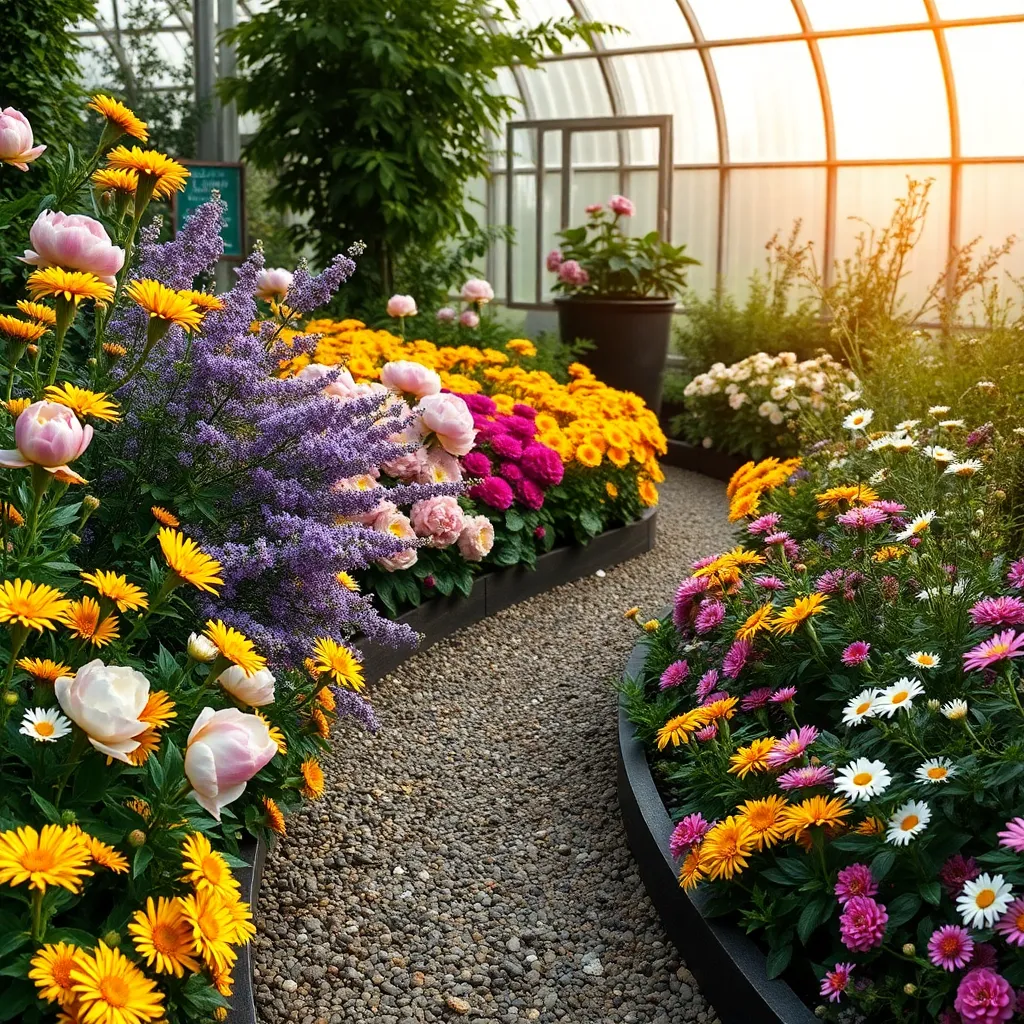
Integrating pathways and borders into your flower bed designs can transform the aesthetic and functionality of your garden. Pathways not only guide foot traffic but also create distinct sections, allowing each flower bed to stand out and be appreciated individually.
Consider using natural materials like gravel, bark mulch, or stepping stones to construct your pathways. These materials are not only attractive but also permeable, helping to maintain healthy soil moisture levels by allowing rainwater to reach the roots below.
When planning your borders, think about using low-growing plants or decorative edging materials to define the edges of your flower beds. Plants like lavender, boxwood, or even ornamental grasses can provide a lush frame that contrasts beautifully with taller flowering plants behind them.
Advanced gardeners might experiment with curving pathways that mimic the natural contours of the landscape, adding an organic feel to the garden. This approach requires careful planning, ensuring that the curves are gentle enough to maintain easy navigation and that they do not disrupt the root systems of existing plants.
To maintain the beauty and health of your pathways, regularly remove any weeds or debris that might accumulate. This not only keeps the area looking clean but also prevents unwanted plants from taking root and competing with your chosen flora for nutrients and water.
Sustainable and Low-Maintenance Options
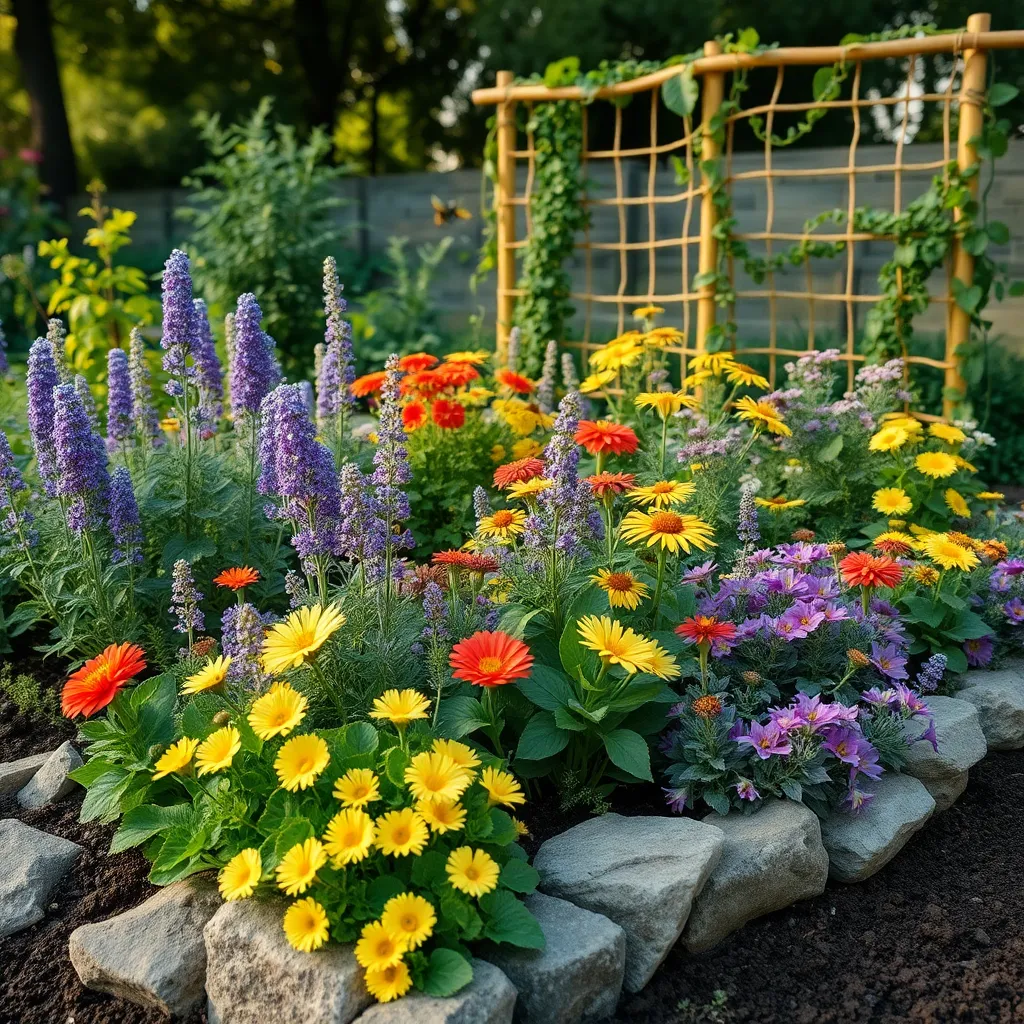
For gardeners seeking sustainable and low-maintenance flower bed designs, choosing native plants is a wise starting point. Native species are typically well-adapted to local climates, requiring less water and care compared to exotic varieties.
Consider incorporating drought-tolerant plants such as lavender and sedum, which thrive in well-drained soil and require minimal watering. These robust plants not only reduce water usage but also attract beneficial pollinators like bees and butterflies.
Mulching is another effective strategy to maintain a low-maintenance garden. A layer of organic mulch helps retain soil moisture, suppress weeds, and gradually enrich the soil as it breaks down.
For an eco-friendly approach, opt for organic compost to improve soil fertility and structure. Regularly amend your flower beds with compost to enhance plant health and reduce the need for synthetic fertilizers.
Conclusion: Growing Success with These Plants
In exploring the ‘8 Stunning Flower Bed Designs,’ we’ve discovered a garden of relationship wisdom. First, we learned how diversity in your garden, much like in relationships, brings vibrant growth. Next, attention to seasonal changes reminds us of the importance of adapting to life’s ebb and flow. The third design teaches that a solid foundation is essential, just as trust is in any partnership. Fourth, the importance of nurturing and consistent care parallels the need for daily effort in relationships. The fifth design highlights symmetry, reminding us of the balance necessary for harmony. Sixth, we appreciate the beauty of complementing colors, illustrating the magic of differences that enhance unity. Seventh, innovation in design points to the excitement of trying new things together, and finally, the eighth design’s simplicity underscores the power of unadorned authenticity.
Now, take a moment to reflect on which ‘design’ resonates most with your relationship and commit to nurturing it today. For even more insights, bookmark this article—it’s a resource you can revisit to cultivate a flourishing relationship. Embrace these concepts as seeds for growth, knowing that with care and creativity, your relationship can blossom into something truly beautiful.

